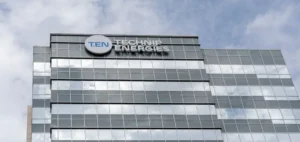Abu Dhabi National Oil Co (ADNOC) and GE Gas Power are working to reduce carbon emissions from the gas turbines used in their industrial operations.
This includes the potential use of hydrogen, ammonia and carbon capture.
ADNOC and GE work on hydrogen, ammonia and CCUS
Under the terms of the initiative, ADNOC and GE will explore three decarbonization strands.
First, the use of hydrogen and hydrogen-blended fuels for low-carbon power generation.
Secondly, the introduction of ammonia as a fuel for GE gas turbines.
The UAE is also aiming for a 25% global market share for low-carbon hydrogen by 2030.
Increasing CCUS’s capacity in the Emirates
Thirdly, the integration of carbon capture solutions (CCUS) into ADNOC’s power generation facilities.
The Emirati company currently has a CO2 capture capacity of 800,000 mt/year.
However, it plans to increase this capacity sixfold by capturing CO2 from its own gas plants.
The aim is to capture 5 million mt/year of CO2 by 2030.






















